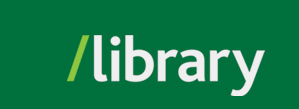This page highlights some of the key components behind the production of newspapers.
Banner Headlines
Pointing out the most prominent news story of the day. Banner headlines usually span the whole width of a broadsheet paper with prominent bold typeface and block letters. This particular issue of The Globe and Mail has two banner headlines; they flow into their respective decks, which are the story columns written below the headlines.

Broadsheet
This large-format newspaper is considered to meet the accepted journalistic standards. Broadsheet newspapers are usually national in scope, and provide coverage of major political and international events. As opposed to tabloid newspapers, they strive to give objective coverage, avoid emotional reporting and focus on expert analysis. The Globe and Mail is an example of a broadsheet newspaper in Canada:
Byline
Gives the name of the author who wrote the article.

Caption
Supplies information beneath an image, photograph, map or other graphic; intended to provide explanation or context.

Dateline
Tells  readers where and when the story was written and filed. Usually appears before the content of an article; news agencies like CP (Canadian Press) and AP (Associated Press) may also be included.
readers where and when the story was written and filed. Usually appears before the content of an article; news agencies like CP (Canadian Press) and AP (Associated Press) may also be included.
Editorial
This section of the newspaper provides opinions on the news, written either by staff or readers. While there are limited ways of presenting current events in a newsworthy fashion, the editorial section of the newspaper offers clues that may reveal the paper’s general bias and political stance.
Articles in the editorial section often give background information on a given topic. Editorials can also be well-researched, providing different perspectives on an issue rather than simply reporting matter-of-fact on an event.
Below is a partial screen capture of the editorial page for The Globe and Mail on December 8, 1941. The featured editorial is from an American journalist, Dorothy Thompson; the page also includes letters to the editor, and other editorials from unnamed staff writers. The attached PDF file will show you the editorial page in its entirety.
Wire Service
Service agencies that collect news reports and photographs of current events from individual reporters. News stories are reviewed, edited and formatted to the accepted standards, and distributed to individual media outlets, including print (see page 21 of How to Read a Newspaper). Reuters, Associated Press and Canadian Press are common wire services that you will encounter when reading news media, whether in print or online.
While the content of a news article may come from a specific agency, the newspaper itself decides and writes the headlines. Their wording might help you identify the editorial stance of the newspaper in question.

Included are some resources that examine the history of journalism, the different sections contained in newspapers, and the factors that determine which stories get reported or not. While some of the books listed below are dated, they are still useful for helping us understand printed newspapers as a waning form of journalism.
Many of these resources are not available through the UFV library; however, they are retrievable through Open Access, or through the Internet Archive. You can create an account with the Internet Archive to e-borrow some of their digitized books.
© , University of the Fraser Valley, 33844 King Road, Abbotsford, B.C., Canada V2S 7M8

